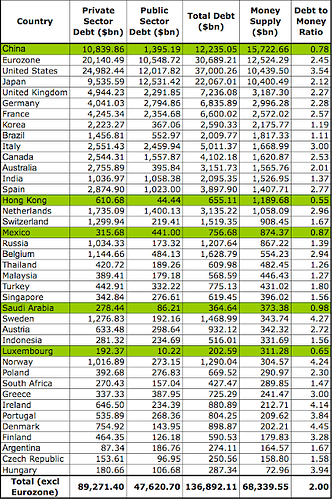So let's use the example of your simple system, modified in two important ways to conform with reality.
Guy borrows $1000 from bank. He has $100/year in interest payments to make, and so let's call it $20/month. For him to qualify for this loan, he must have payment coverage of say 25%. He needs a salary - from somewhere - of $80/month. Otherwise - he can't get the loan, right? That's reality, at least in the good old days, and this is our first change to conform with reality. Initial condition: you need enough salary to cover the P&I payments with a decent amount left over. Otherwise, no loan.
So, how does our borrower make his payments? Cash flow from his salary. That was in the initial conditions. It takes him 10 years to pay it all off. And he does, assuming he can keep his job that provides him his flow. (Bear with me, I'll explain how).
Now then, when the loan gets fully paid back, the bank has no more assets or income. Probably, it closes. [We ignore for the moment what happens to the interest payments - which are likely recycled back into the economy, as salaries, dividends to shareholders, etc]. But now I hear you cry, "but wait! All the money is gone from the system! And then some!"
No. Turns out, we have one more modification to make to adapt the simple system to conform with reality.
There is this thing called base money. Before the system starts, the Fed provides an additional chunk of base operating currency for the economy that provides a level of underlying liquidity so that money can still flow even when every single loan in the system is paid off. And remember, flow is critical to making those payments.
So in a sense, it is base money that enables continuous flow - regardless of what happens to individual banks and individual borrowers. Even if all banks close, there remains enough money to enable enough flow through the system so that the economy can still function even with zero bank credit outstanding.
So once you add in base money, everything works fine. The simple system - turns out, its too simple. It is missing some absolutely critical bits. Add in flow and base money, and everything works.
Are these things fake or artificial? No. They both exist. To get a loan, you must show you have the flow to cover payments. And base money also exists. It has, since 1914.
What can we conclude from all this? Flow is critical to the model working, and its also critical for the real economy. Without flow, people cannot make payments. When the flow slows in the economy, that is when people start having real trouble.
Just in talking this through, I am realizing that deflation effects are as much about slower flow as it is about reduced quantity of money. Some people (Martin Armstrong) suggest that flow is actually much more important than money quantity. And indeed, in our hyperinflation podcast, we saw that once people started money flowing much faster, that led directly to price increases.
Without modeling flow - by trying to model a system just using "quantity of money" - you are missing a critical piece in understanding how things really work. In fact, without flow, nothing works. Consider: what happens when you attempt to model human physiology by looking only at the quantity of blood. Does that work? Of course not. Without blood flow - when the heart stops - the body dies. Same idea. So modeling a bank/debt/money system without including modifications that take into account flow just won't work. It can't. Flow is the magic that enables everything to happen, in the body, and in the monetary system too.
If you hand someone 10 trillion dollars and they keep it in the cellar, its not inflationary. No flow = no inflation. If you hand that same person 1 million dollars, and it gets passed from person to person such that everyone in the economy holds it for 60 seconds, that's hyperinflation, because math says it will change hands 525,000 times in one year - resulting in "GDP" (activity) of 525 trillion over that year. From only a million bucks!
I really love these discussions. I learn some new nuance every time we talk about them. Apologies if others find this sort of thing tedious and repetitive. One of my "things" is that I want to really understand how stuff works.
Just as a matter of interest, ABMSL (Seasonally Adjusted base money) is one of the oldest timeseries that FRED has. First entry was in May, 1914, at 3.93 billion dollars. And change.




